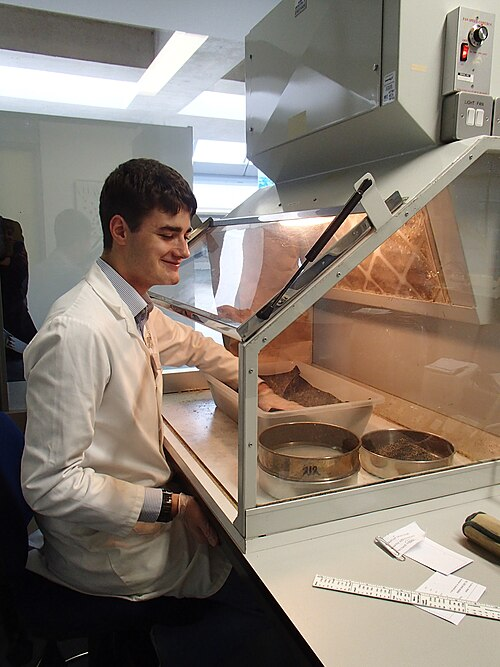OCR Specification focus:
‘Compare in situ (marine conservation zones, wildlife reserves) and ex situ (seed banks, botanic gardens, zoos); include CITES, CBD, and Countryside Stewardship Scheme.’
Conservation methods preserve biodiversity by protecting species, habitats, and genetic diversity. Effective conservation combines local and international strategies to sustain ecosystems and prevent extinction for future generations.
Conservation Methods
Conservation is the maintenance and management of biodiversity to ensure the survival of species and habitats. Strategies can be broadly divided into in situ and ex situ approaches, each with distinct purposes, benefits, and limitations.
In Situ Conservation
In situ conservation refers to protecting species within their natural habitats. This allows organisms to maintain their ecological roles and evolutionary adaptations while preserving the entire ecosystem structure.
Examples of in situ methods include:
National parks and nature reserves – areas legally protected from exploitation such as deforestation or hunting.
Marine Conservation Zones (MCZs) – designated areas that protect marine habitats and species from overfishing, pollution, or coastal development.
Wildlife reserves – specific zones where endangered species are monitored, and harmful human activities are restricted.
Protected landscapes – areas managed to conserve biodiversity while permitting limited sustainable use by humans.
In situ conservation: The protection and maintenance of species in their natural habitats, ensuring the preservation of entire ecosystems and ecological processes.
Advantages of in situ conservation:
Maintains natural interactions between species and their environment.
Preserves evolutionary adaptations and genetic diversity.
Usually cheaper and less labour-intensive than ex situ methods.
Encourages ecotourism, raising awareness and funding for conservation.
Limitations:
Habitat destruction or poaching may still occur.
It may not protect species with very small or fragmented populations.
Climate change or invasive species can still threaten the ecosystem.
Ex Situ Conservation
When in situ methods are insufficient or impractical, ex situ conservation protects species outside their natural habitats. This approach is particularly useful when populations are critically low in the wild.

Seed cleaning of Pilosella officinarum at the Millennium Seed Bank conducted in a dust hood to remove debris and reduce disease risk before storage. This illustrates controlled processing prior to drying and cold storage in ex situ conservation. The image focuses on the cleaning stage and does not depict subsequent storage facilities. Source.
Examples of ex situ methods include:
Zoos – maintain captive breeding programmes for endangered animals and facilitate reintroduction to the wild.
Botanic gardens – conserve plant species through seed and cutting collections.
Seed banks – store viable seeds under controlled conditions for long-term preservation.

Millennium Seed Bank, Wakehurst (Royal Botanic Gardens, Kew), housing seed drying rooms, processing labs and underground cold storage vaults for long-term conservation. This facility underpins ex situ plant conservation and future restoration. Image shows exterior architecture; internal vaults are not visible here. Source.
Cryopreservation – involves freezing gametes, embryos, or tissues for future breeding and research.
Ex situ conservation: The preservation of species outside their natural habitats, often involving human management in controlled environments like zoos, botanic gardens, or seed banks.
Advantages of ex situ conservation:
Protects species from predation, disease, and environmental change.
Enables controlled breeding and genetic research.
Allows education and public engagement, fostering conservation support.
Provides genetic backup if wild populations are lost.
Limitations:
Expensive to maintain and manage.
Organisms may lose natural behaviours and fail to adapt when reintroduced.
Limited genetic diversity if breeding populations are small.
Does not protect the ecosystem or habitat.
Comparative Importance of In Situ and Ex Situ Conservation
Both methods are complementary rather than opposing. In situ conservation provides long-term ecosystem stability, while ex situ approaches offer emergency measures when species are near extinction. Effective conservation programmes often combine both—for instance, breeding animals ex situ and later releasing them into protected in situ reserves.
International Conservation Agreements
Conservation requires global cooperation, as biodiversity loss is a worldwide issue. Several international agreements aim to safeguard species and habitats.
Convention on International Trade in Endangered Species (CITES)
CITES was established in 1973 to regulate the international trade of wildlife and plant species.
CITES: An international agreement between governments that ensures trade in wild animals and plants does not threaten their survival.
Key features:
Species are categorised into Appendices I–III based on conservation status.
Appendix I includes species threatened with extinction; trade is permitted only under exceptional circumstances.
Appendix II lists species not yet endangered but that may become so unless trade is controlled.
Appendix III includes species protected in at least one country requesting international cooperation.
CITES reduces illegal poaching and trafficking, though enforcement remains challenging.
Convention on Biological Diversity (CBD)
Agreed at the 1992 Rio Earth Summit, the CBD is a comprehensive international treaty focusing on the conservation and sustainable use of biodiversity.
Convention on Biological Diversity (CBD): A global treaty promoting biodiversity conservation, sustainable resource use, and equitable sharing of genetic resource benefits.
Key objectives:
Develop national biodiversity strategies and integrate them into broader policies.
Promote sustainable development and the fair sharing of benefits arising from biological resources.
Encourage public education and scientific cooperation.
Countries implementing CBD commitments often develop protected areas, strengthen legal frameworks, and promote sustainable agriculture.
Countryside Stewardship Scheme (CSS)
The Countryside Stewardship Scheme, first introduced in the UK in 1991 and later expanded, is an example of a national-level conservation agreement aligned with global biodiversity goals.
Key aims of the CSS:
Encourage farmers and landowners to manage land sustainably.
Provide financial incentives for maintaining hedgerows, creating field margins, conserving ponds and meadows, and supporting pollinators.
Promote biodiversity and ecosystem services within agricultural landscapes.
Countryside Stewardship Scheme (CSS): A UK initiative offering payments to land managers for conserving wildlife habitats and enhancing the rural environment.
This scheme highlights how agriculture and conservation can coexist through careful management practices, reducing the ecological impact of modern farming.
Integration of Conservation Approaches
Successful conservation requires integrating in situ and ex situ methods with international and national agreements. This integration ensures that both species and their habitats are preserved while addressing human needs for resources and development. Through collaboration, education, and sustainable management, biodiversity can be protected effectively for future generations.
FAQ
Marine Conservation Zones are a specific type of Marine Protected Area used in the UK under national legislation. All MCZs are MPAs, but not all MPAs are MCZs.
MCZs focus on protecting nationally important species, habitats, and geological features, while other MPAs, such as Special Areas of Conservation (SACs), may be designated under EU or international directives.
Together, they form a network of protected marine sites designed to maintain biodiversity, allow sustainable resource use, and support ecosystem recovery.
Seed banks maintain conditions that slow down seed metabolism and ageing, extending seed viability for decades or even centuries.
Key conditions include:
Low humidity (around 15%) to prevent fungal growth and reduce water activity.
Low temperature (−20°C or below) to minimise enzymatic reactions and respiration.
These factors ensure that the seeds remain dormant but viable, allowing for regeneration when required for reintroduction or research purposes.
Reintroduction is complex and often unsuccessful without careful planning. Main challenges include:
Loss of natural behaviours, such as hunting or predator avoidance, due to captive conditions.
Low genetic diversity within breeding populations, reducing adaptability.
Habitat degradation or absence of suitable environments for release.
Disease transmission between captive and wild populations.
Successful reintroductions require habitat restoration, genetic monitoring, and gradual acclimatisation of individuals to wild conditions.
The scheme provides payments to land managers who implement specific actions that enhance pollinator habitats.
Examples include:
Planting flower-rich field margins and wildflower meadows.
Maintaining hedgerows and grassy buffer strips for nesting and foraging.
Reducing pesticide use to prevent harm to bees and butterflies.
These measures improve landscape connectivity and food availability, helping reverse pollinator decline across agricultural regions.
Most agreements, such as CITES and the CBD, rely on cooperation and reporting rather than strict enforcement.
Countries commit to:
Developing national laws and conservation strategies.
Submitting regular progress reports to monitoring bodies.
Participating in international meetings to share data and review outcomes.
While compliance depends on national capacity and political will, peer review and trade sanctions (in CITES cases) help maintain accountability and global biodiversity standards.
Practice Questions
Question 1 (2 marks)
State two advantages of in situ conservation compared with ex situ conservation methods.
Mark scheme:
Maintains species in their natural habitat (1)
Allows species to continue interacting with other organisms and maintain ecological relationships (1)
Preserves evolutionary adaptations to the environment (1)
Is generally less expensive and requires less intensive management than ex situ conservation (1)
(Max 2 marks — any two correct points)
Question 2 (5 marks)
Discuss how both international and national conservation agreements contribute to maintaining biodiversity. Refer to named examples in your answer.
Mark scheme:
Identifies international agreements, e.g. CITES or Convention on Biological Diversity (CBD) (1)
Describes CITES aims: controls trade in endangered species to prevent extinction (1)
Describes CBD aims: promotes sustainable use of resources and development of national biodiversity strategies (1)
Identifies a national scheme, e.g. Countryside Stewardship Scheme (CSS) (1)
Explains CSS role: provides financial incentives to landowners/farmers to manage land sustainably and protect habitats (1)
States that agreements encourage cooperation between countries and individuals to protect species and habitats (1)
(Max 5 marks — allocate 1 mark per relevant point up to 5)

